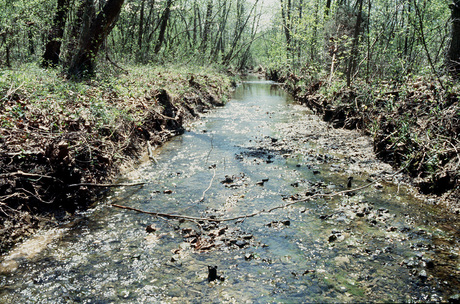Microbial communities can assess environmental contamination

A US research collaboration has used statistical analysis of DNA from natural microbial communities to accurately identify environmental contaminants and serve as quantitative geochemical biosensors. Their study was published in the journal mBio and sponsored by ENIGMA, a US Department of Energy program based at the Lawrence Berkeley National Laboratory (Berkeley Lab).
“Changes induced in the natural microbial community structure by contaminants last long after the contaminants themselves have become undetectable,” explained corresponding author and research leader Terry Hazen. “This means the DNA of these microbial communities can be used as a forensic tool for measuring anthropogenic effects on the environment.”
The collaborators chose to examine groundwater well clusters at the Bear Creek watershed in Oak Ridge, Tennessee - a crucial site for the early development of nuclear weapons which harbours spectacular geochemical gradients. The team then collected a large number of microbial DNA samples from the wells in combination with 28 other physical/chemical characteristics.
“The wells we sampled typically contain a high number of particulates in the groundwater, thus causing the filters we collected DNA on to clog easily,” said study co-author Andrea Rocha, who spent three months collecting samples from the watershed. “We had to change our filters each time they clogged until we obtained our required four litres of groundwater. Sometimes this meant changing filters five to six times for one well.”
Analysis of the DNA data from the collected groundwater samples was carried out via a technique called ‘supervised machine-learning’, which the ENIGMA team applied to high-throughput DNA sequencing data. Hazen explained, “Because microbial communities continuously sense and respond to their environments, they form a ubiquitous environmental surveillance network that can be inexpensively digitised through DNA sequencing. Our idea was to determine whether and how information encoded in bacterial communities might be tapped to quantitatively characterise the environment.”
The focus of the study was on the integration of information gathered from native bacterial communities containing billions of cells and encompassing thousands of taxonomic groups. The authors revealed that “sequence data from the 16S rRNA gene alone [could] quantitatively predict a rich catalogue of 26 geochemical features collected from 93 wells with highly differing geochemistry characteristics”. These geochemical features were then used to predict contamination, with 83% accuracy for predicting uranium contamination and 73% for predicting nitrate contamination.
“These in situ biosensors rely on environmental selection rather than directed engineering, and so this approach could be rapidly deployed and scaled as sequencing technology continues to become faster, simpler and less expensive,” the authors said.
“Our work shows that knowing what bacteria are present allows us to infer something about the current or past chemistry of a site,” added co-author and principal investigator Eric Alm. “The next big challenge will be to understand why different bacteria are associated with different environmental conditions.”
Droplet microfluidics for single-cell analysis
Discover how droplet microfluidics is revolutionising single-cell analysis and selection in...
PCR alternative offers diagnostic testing in a handheld device
Researchers have developed a diagnostic platform that uses similar techniques to PCR, but within...
Urine test enables non-invasive bladder cancer detection
Researchers have developed a streamlined and simplified DNA-based urine test to improve early...







